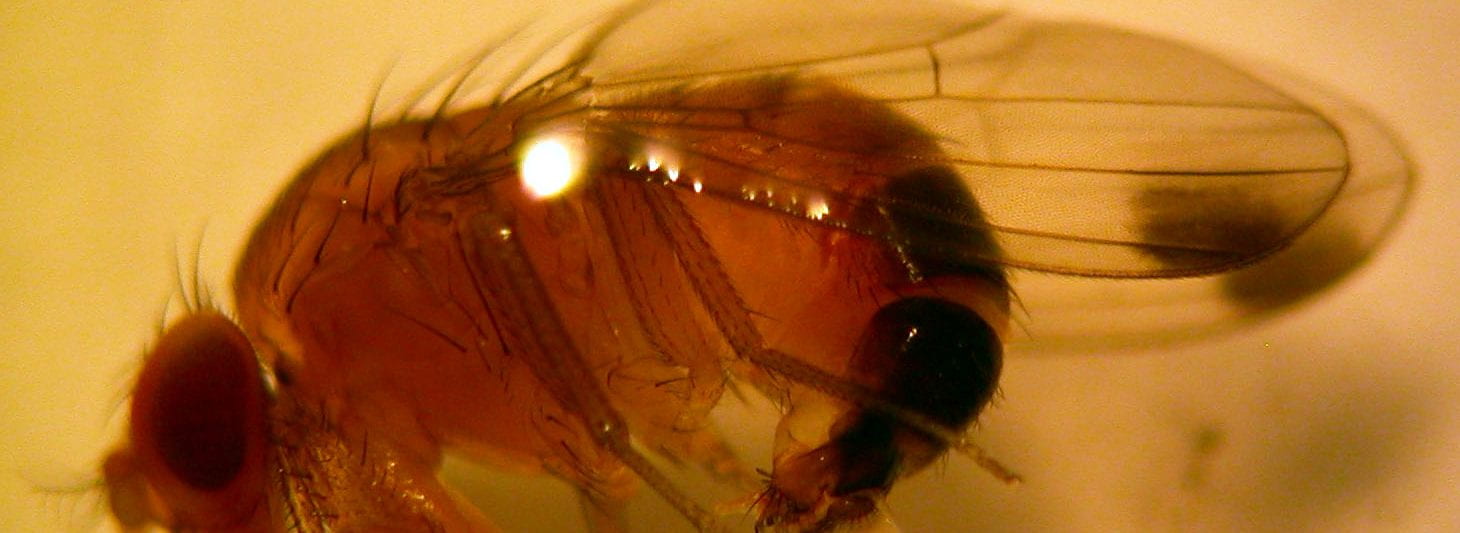Sustained catch at the final three sites in the SWD monitoring network: two in Orleans County and one in Wayne County. In raspberries in Orleans County, 8 SWD were caught in 2 traps (3 males and 5 females). In blueberries in Orleans and Wayne Counties 4 (3 males and 1 female) were caught in 2 traps and 5 (2 males and 3 females) in 4 traps, respectively. Growers of the berries on these farms have had an active insecticide program in place for SWD. Insecticide treatments had kept numbers low to non-existent on these farms until now.
SWD populations are building up across New York. In some plantings we are monitoring for research, with minimal to no insecticide program, average catch has been over 5 SWD per trap this week in 12 traps — that's 50 to 100 SWD total.
Low levels of fruit infestation have been detected via salt flotation. You can check your fruit routinely with this technique, which may prove very useful in U-pick operations so you can inform your clientele. Guidelines for Checking Fruit for SWD Larvae in the Field.

For those who are opening your U-pick operations slowly and steadily during the COVID-19 pandemic, here's a resource developed just for you:
- Best Management Practices for U-Pick Farms During the COVID-19 Pandemic smallfarms.cornell.edu/resources/farm-resilience/best-management-practices-for-u-pick-farms-during-the-covid-19-pandemic/
For those who want information on SWD to give to clientele:
- Spotted Wing Drosophila Invasive Species and Exotic Pests fact sheet - download it from Cornell eCommons here hdl.handle.net/1813/42883.3
- Spotted Wing Drosophila: An invasive and destructive pest on raspberries, blueberries, blackberries, cherries, and more Tri-fold brochure - download it from Cornell eCommons here hdl.handle.net/1813/44644
Effective management of SWD will become more challenging as the summer continues. Keep in mind the key tactics:
- Excellent sanitation to reduce SWD populations: clean harvests and get cull fruit out of the planting.
- Canopy and water management to make the environment less favorable: air circulation to keep things drier.
- Insecticide sprays will kill SWD adults and thereby reduce egg laying: choose materials with excellent efficacy
- Regular fruit sampling: see if SWD larvae are in your fruit and at what level.
- Cool harvested fruit immediately: Below 37°F cold storage or in-store coolers will slow, stop, or kill development of SWD larvae and eggs.

Learn more about SWD. Check out the information on Cornell Fruit Resources Spotted Wing Drosophila, fruit.cornell.edu/spottedwing/.
Funding for the SWD Monitoring Network provided by:
- NYS Berry Growers Association
- NYS IPM Program
- USDA NIFA Crop Protection and Pest Management Program

